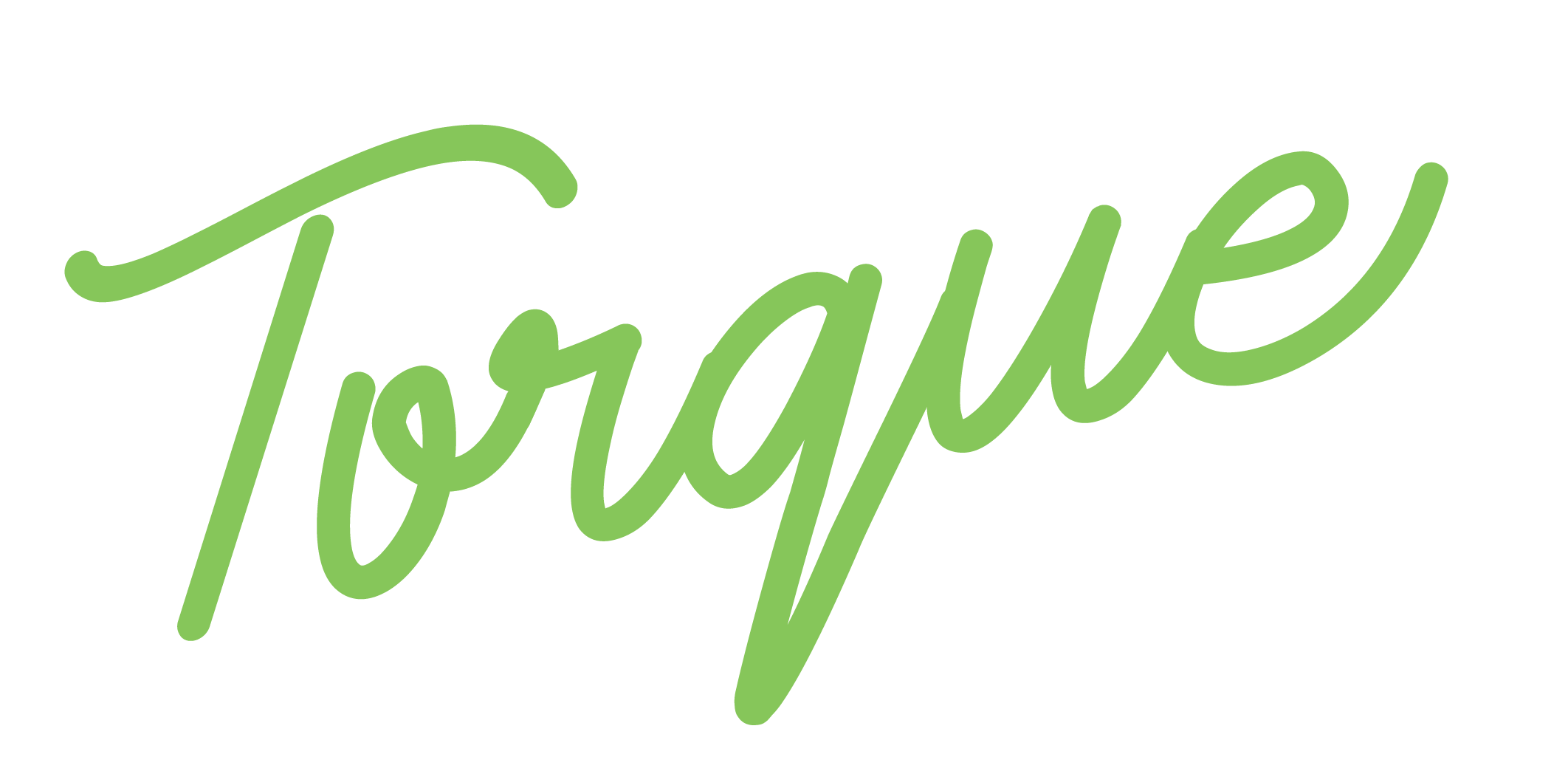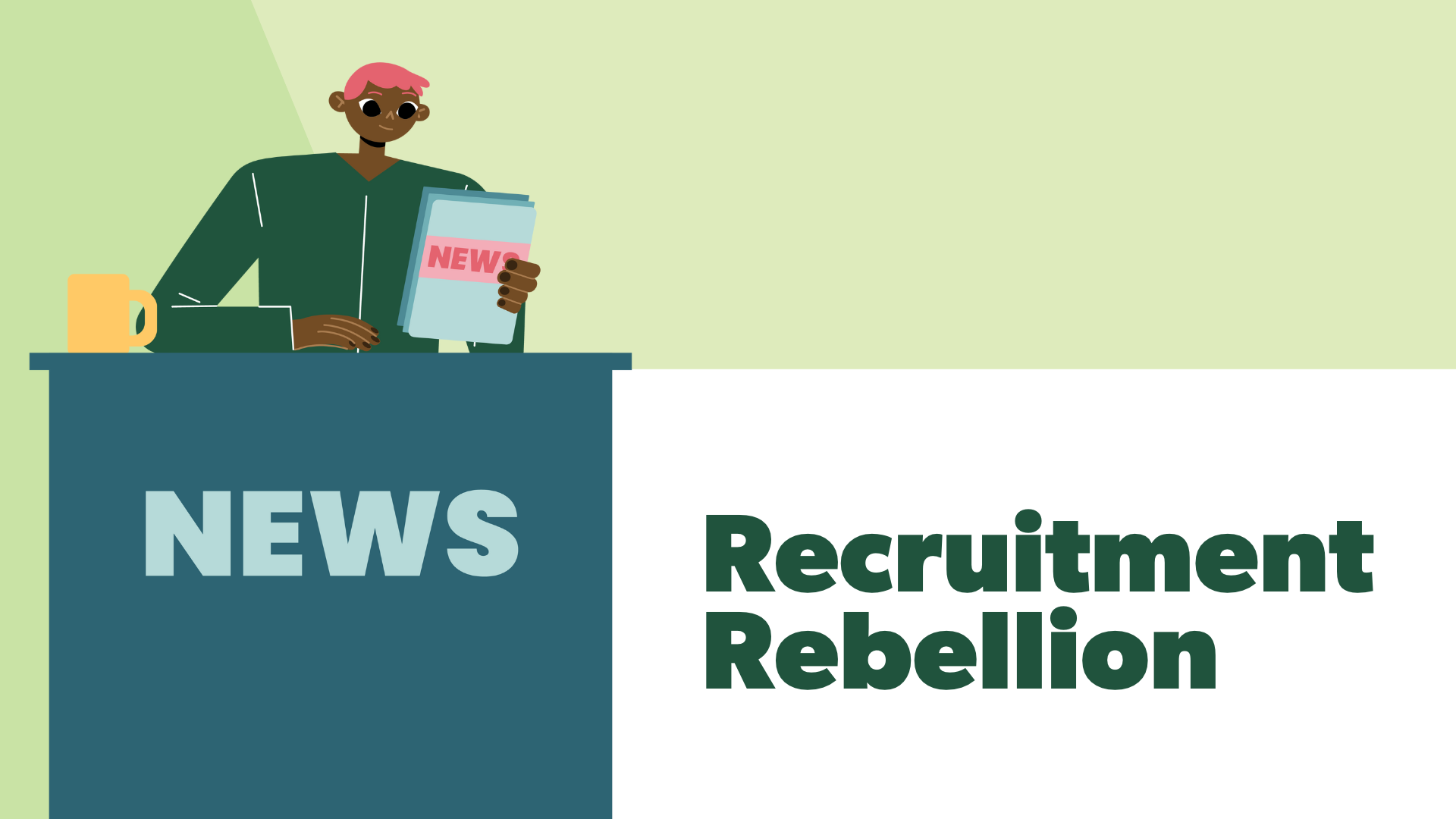
The great Recruitment Rebellion
Jul 5
/
Hannelie Pretorius

Sticking to old-school recruitment methods—like only looking at CVs, using cookie-cutter job ads, and boring onboarding routines—just doesn’t work anymore. These outdated practices are not only inefficient but also scare off top talent. It's time to adopt a recruitment approach that’s inclusive, engaging, and tech-savvy.
The myths around recruitment are more than just annoying—they're stopping companies from snagging and keeping the best people. By debunking these myths and leveraging current trends, we can revolutionise the way we recruit, making it more effective and enjoyable for everyone involved.
Let’s face it, the second a candidate checks out your company, they’re judging you. From the job posting that catches their attention to the recruitment process, every interaction shapes their view. A smooth recruitment journey? That’s your ticket to show off your company culture and make a good first impression.
A strong recruitment strategy does more than just fill seats. It shows off your brand, aligns with your culture, and pulls in the crème de la crème of potential candidates. Plus, a smooth and consistent process screams stability—who wouldn’t want to join a well-oiled machine? Standardised procedures? They save time, money, and headaches, getting new hires onboarded without the fuss. And a great start means happier employees who stick around longer.
According to TINYpulse, employees are 23% more likely to stick around if their manager clearly explains their roles and responsibilities. It's all about making sure people know what's expected of them from day one.
Jac Fitz-Enz, in his book "The ROI of Human Capital," found that there's a strong connection between good onboarding and keeping employees around. But surprisingly, a joint study by Kronos and the Human Capital Institute revealed that 76% of HR leaders think their onboarding processes are underused, and 24% don't even have an onboarding strategy.
Starting off on the wrong foot can lead to all sorts of problems like poor communication, misunderstandings about company culture, and wasted time. So, it's crucial to ask the right questions during onboarding to make sure everything is crystal clear and to keep employees engaged throughout their time with the company.
New employees face unique challenges compared to their seasoned colleagues, so it's best to address any issues early in the onboarding process. This way, everyone can get on the right track from the beginning.
Inclusivity is just a buzzword, right?
Inclusivity is far more than a corporate buzzword. Inclusive language in job ads can make or break your talent pool. Think about it: requiring an EE candidate to have a car or speak English as a first language might sound standard, but it can exclude amazing talent. Instead, why not focus on skills and potential? Another example, does the role truly require a full-time office presence, or could you expand your candidate pool by offering remote or hybrid working options?
Companies are now using AI to analyse job descriptions and remove biased language. This ensures that job postings appeal to a broader, more diverse audience. It's not just about being politically correct; it’s about being smart and tapping into a wider talent pool.
Recruitment isn't all about the CV
If you think recruitment based on submitting a CV is the be-all and end-all, think again. Recruitment is evolving, and so should your methods. Gamification, storytelling, multimedia and personalisation are the new kids on the block. Imagine candidates learning about your company through interactive games or engaging stories about your team. It’s way more fun and memorable than a bland CV and will give you a better sense of the person behind the paper.
Gamified assessments are gaining traction, not only for testing skills but also for giving candidates a glimpse into your company culture. Google famously used a riddle on a billboard, challenging people to solve a series of equations—effectively pre-screening candidates in a novel way. Personalised recruitment processes make candidates feel valued from the outset, setting a positive tone for their journey with your company.
One compelling reason to incorporate gamification into the recruitment process is the current job market scenario. With record-high unemployment rates in many countries, the number of applicants for any given position has surged, making the selection process overwhelming. Gamified assessments serve as intelligent tools to narrow down the candidate pool to those who truly possess the skills, experience, and aptitude required for the job.
Gamified assessments provide your candidates with real work-life scenarios and cognitive games, which allows candidates to experience what it would be like working in your organisation. These interactive assessments not only effectively evaluate skills but also provide candidates with a glimpse of your company culture, showcasing your innovative approach. Tailored recruitment interactions make candidates feel valued, leading to a positive and memorable experience. Additionally, these methods help reduce unconscious bias, ensure fair evaluations, and provide valuable data for informed hiring decisions. Ultimately, candidates who feel aligned with your company culture from the start are more likely to stay long-term, improving retention rates.
Onboarding is just paperwork
Onboarding isn’t just about filling out forms and getting a desk. It’s your chance to make a stellar first impression. Use technology to create a smooth, engaging onboarding experience. Think chatbots that answer newbie questions or digital onboarding platforms that guide new hires through their first weeks.
Companies are using AR and VR for immersive onboarding experiences. Imagine a new hire walking through a virtual tour of your office or participating in a VR-based safety training. It’s innovative, engaging, and sets the stage for a tech-forward workplace. Let tech handle the boring stuff, freeing up HR and line managers to do what really matters—building connections with new hires. After all, relationships are the real key to success!
Culture fit doesn’t always happen over time
Don't roll the dice on culture fit. Make sure new hires vibe with your company culture from day one, starting with the recruitment process. Regular check-ins, mentoring, and social events can make all the difference.
HR analytics can match candidates to roles where they’ll thrive, aligning their strengths with your company’s needs. Plus, transparent communication and trust-building from the get-go help new hires feel at home faster.
Mental health should be a priority during onboarding
Understanding psychological safety
Psychological safety, often discussed in workplace culture, is crucial in recruitment. The workplace should be as comfy as a cushion where everyone feels safe and supported. Creating this "soft place" allows employees to be themselves without fear of judgement. When people feel secure, creativity thrives, teamwork improves, and everyone is happier and more productive. In recruitment, this means creating a space where candidates feel comfortable speaking up without worrying about how it might affect their application. This concept is key to transforming a good candidate experience into a great one.
Stages of psychological safety in recruitment
Dr. Timothy Clark's four stages of psychological safety can be adapted to recruitment:
- Inclusion safety
Candidates need to feel welcomed and acknowledged from the first interaction. Personalising initial communications helps build rapport and makes candidates feel valued. - Learner safety
Candidates should feel free to ask questions and receive constructive feedback. Open communication fosters growth and positions you as a recruiter of choice. - Contributor safety
Actively seeking candidate feedback shows that their opinions matter and encourages a sense of contribution. - Challenger safety
When candidates are comfortable enough to suggest improvements, it indicates a high level of trust and confidence. Addressing their feedback demonstrates a commitment to improvement.
Why psychological safety matters in recruitment
Today's job market is competitive, and candidates have high expectations. Psychological safety helps recruiters understand these expectations by building trust and encouraging candidates to express themselves genuinely. This openness is vital for making quality placements, as it allows recruiters to truly understand the candidates' strengths and motivations.
Creating a psychologically safe candidate experience
To promote psychological safety in recruitment, consider the following strategies:
Monitor recruitment communication
- Respond promptly to candidate queries and provide timely updates throughout the application process. In basic terms avoid ghosting candidates.
- Clearly communicate job requirements and expectations, allowing candidates to make informed decisions.
- Deliver application results via phone calls rather than impersonal texts or emails.
Create a friendly interview environment
- Encourage a conversational approach to interviews, making candidates feel comfortable to be their authentic selves.
- High-pressure interviews can deter genuine communication. Aim to reduce stress to help candidates present their true capabilities.
Implement a candidate feedback loop
- Use experience management software to gather and analyse candidate feedback efficiently.
- Act on the feedback to continuously improve the recruitment process, closing the loop and enhancing candidate experience.
Incorporating psychological safety into your recruitment strategy can significantly improve the candidate experience. By prioritising psychological safety, you build trust and create genuine connections with candidates, setting your recruitment brand apart in a competitive market.
Tips to up your recruitment and onboarding game
- Make your processes as efficient and user-friendly as possible.
- Show your team you’ve got their back, and they’ll stick around.
- Keep the communication lines open. Transparent, two-way communication builds trust and keeps everyone in the loop.
- Regular, constructive feedback helps employees grow and feel valued.
- Training programmes aren’t just about skills - they’re about showing your team you’re invested in their future.
- Flexible work arrangements aren’t just trendy - they’re necessary. Happy employees with balanced lives are productive and loyal.
Crafting a winning recruitment plan
Recruitment strategies often go unheard, so let's emphasise them clearly even at the risk of ‘mansplaining’:
1. Offer competitive salaries, attractive benefits, and clear growth opportunities.
2. Be specific about what you’re looking for. It’s like having a treasure map to the ideal candidate.
3. Recruitment should be efficient, not extravagant.
4. Don’t rely solely on job boards. Use social media, referrals, and even recruitment SEO to find the best talent.
5. Once you find the perfect match, don’t delay. Make an offer before someone else does.
According to Omni, a leading HR company, the onboarding experiences of top companies stand out due to their unique approaches:
Zapier
Zapier’s onboarding process involves a first week focused on familiarising new hires with company tools and expectations. By week two, employees engage in small tasks, and by week three, they collaborate on cross-functional projects. This gradual approach helps reduce new job anxiety and allows employees to settle in without feeling overwhelmed.
Buffer
Buffer employs a comprehensive onboarding process with a system involving three buddies: a hiring manager, a culture buddy, and a role buddy. This support system ensures that new hires receive guidance and feel integrated into the team. Additionally, Buffer provides all necessary information through five introductory emails and a central onboarding document.
Miro
Miro’s onboarding spans 90 days and includes a structured plan based on the book "The First 90 Days" by Michael Watkins. This plan outlines expectations and initial projects, helping new hires understand their role and the company’s complexity. New hires set their hours in communication tools to facilitate collaboration across time zones.
Zappos
Zappos welcomes new hires with an engaging onboarding video that highlights the company culture and employee roles. Additionally, Zappos offers new employees a sizable amount to leave after training, ensuring only those committed to the culture stay.
Apple
Apple’s onboarding includes the iBuddy system, pairing new hires with experienced employees outside their primary team. This helps newcomers get comfortable with the company culture and workplace habits, easing their transition.
HubSpot
HubSpot uses a branded onboarding platform called Foundations, which includes essential information for new hires. The company provides video tutorials on using HubSpot’s products, especially beneficial for remote employees without hands-on experience.
Grubhub
Grubhub’s onboarding process includes a short, informative video that provides new hires with all the necessary information to succeed. The video format ensures content is memorable and engaging.
Vodafone
Vodafone developed an onboarding app that guides new hires through the process, providing crucial company information and simplifying the onboarding experience.
Google
Google’s onboarding focuses on managers, who receive automated notifications with five tasks 24 hours before a new hire starts. These tasks include assigning a peer buddy, discussing roles, and setting up check-ins, ensuring managers are prepared and engaged in the onboarding process.
Verisys
Verisys prioritised creating tutorial videos for setting up productive home offices when switching to remote work. New hires receive equipment and swag packages at home and are warmly welcomed in team channels on Slack.
Roadsurfer
Roadsurfer’s onboarding includes interactive lessons, messages via Microsoft Teams, and structured experiences for both the company and specific teams. This process ensures all new hires receive consistent information and integration, leading to high satisfaction ratings.
Each company’s onboarding process reflects its unique culture and values, aiming to effectively integrate new employees and foster their growth.
It’s time to ditch the dinosaur methods and step into a tech-savvy, inclusive recruitment future. Trust us, your brand will thank you, and so will the people who’ll stick around because they actually feel included and valued from day one.
Because we care about creating an exceptional experience for new hires, we've crafted an onboarding checklist that showcases our innovative approach. Download our onboarding checklist and discover how we do it. By having an onboarding checklist, you demonstrate your commitment to a smooth and engaging onboarding experience, ultimately creating a positive first impression and stronger employee satisfaction.


